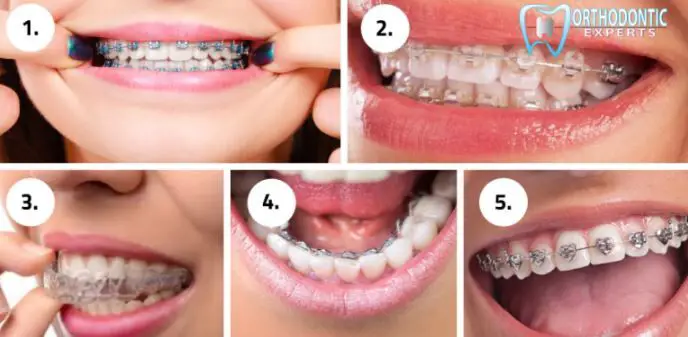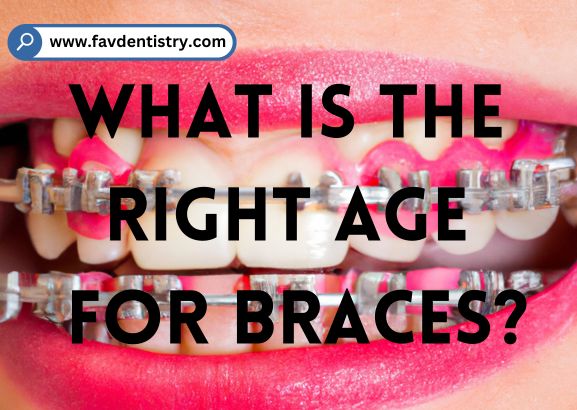Braces and Invisalign both have their pros and cons. While braces are more visible and require dietary restrictions, they offer a more efficient treatment option for complex cases.
On the other hand, Invisalign aligners are virtually invisible and allow for easier oral hygiene but may require more discipline to wear consistently. Ultimately, the choice between braces and Invisalign depends on the specific needs and preferences of the individual.
When considering orthodontic treatment, it’s essential to weigh these factors and consult with a professional to make an informed decision that suits your unique situation. Taking into account your dental health, lifestyle, and personal goals, you can determine which option is best suited for you.
Understanding Braces And Invisalign
Braces and Invisalign are orthodontic treatments aimed at straightening teeth, improving their alignment, and enhancing smiles. Braces consist of metal brackets bonded to teeth, while Invisalign uses clear aligners. These treatments work by applying gentle pressure to gradually move teeth into the desired position.
The orthodontic process typically involves regular adjustments and check-ups to monitor progress and make any necessary adjustments. Braces are fixed and cannot be removed until treatment is complete. In contrast, Invisalign aligners can be removed for eating and cleaning teeth. Both options have their pros and cons, with braces being more effective for complex cases and Invisalign offering convenience and a more discreet appearance.
It’s essential to consult with an orthodontist to determine the most suitable option based on individual needs and preferences, by understanding how braces and Invisalign work, individuals can make informed decisions about their orthodontic treatment.
Pros And Cons Of Braces
Traditional braces and Invisalign are two popular options for teeth straightening. When considering the pros and cons of braces, it’s essential to focus on the advantages of traditional braces. Firstly, they are highly effective, even in complex cases. Secondly, traditional braces are a more cost-effective solution compared to Invisalign.
Moreover, they are suitable for all age groups, making them a versatile choice. However, there are some disadvantages to consider. Traditional braces have visible metal brackets and wires, which may affect one’s appearance. Additionally, they can be inconvenient and uncomfortable at times.
Moreover, dietary restrictions and difficulties in maintaining oral hygiene are common challenges. Despite these drawbacks, traditional braces remain a reliable and efficient solution for teeth alignment.
Pros And Cons Of Invisalign
Invisalign offers many advantages over traditional braces, making it a popular choice for teeth straightening. One significant benefit is its invisible and discreet appearance, allowing patients to go about their daily lives without feeling self-conscious. The aligners are also removable, providing convenience for eating and cleaning, which is essential for maintaining good oral hygiene.
However, Invisalign may be less effective in treating complicated cases, and it comes with a higher cost compared to traditional braces. Additionally, it requires more compliance and discipline from the patients to achieve the desired results. Despite these disadvantages, the advantages of Invisalign often outweigh the drawbacks for those looking for a more discreet and convenient teeth straightening option.
Factors To Consider When Choosing Between Braces And Invisalign
Factors to consider when choosing between braces and Invisalign include the severity and complexity of dental issues, cosmetic preference, and comfort level, lifestyle factors and daily routine, duration of treatment and follow-up appointments, financial considerations, and insurance coverage.
The severity and complexity of the dental issues will determine which treatment option is more suitable. Cosmetic preference and comfort level are essential, as some patients may prefer the discreet appearance of Invisalign aligners. Lifestyle factors and daily routine should also be taken into consideration, as braces may require more maintenance and adjustments.
The duration of treatment and the number of follow-up appointments needed should be discussed with the orthodontist. Lastly, financial considerations and insurance coverage should be explored to determine which option is more affordable. By evaluating these factors, individuals can make an informed decision that suits their specific needs and preferences.
Which Option Is Right For You? Factors To Help You Decide
Choosing between braces and Invisalign requires evaluating your dental needs and considering personal preferences, lifestyle, and professional guidance. Orthodontists can provide valuable insights to help weigh the pros and cons of both options. Ultimately, making an informed decision depends on individual circumstances.
By considering the specific alignment issues and dental concerns, you can determine which treatment will best suit your needs. Additionally, assessing your lifestyle and preferences will help determine whether traditional braces or Invisalign aligners are more compatible. Consulting with an orthodontist is crucial for receiving professional guidance tailored to your unique situation.
They will explain the benefits and drawbacks of each option, enabling you to make an informed choice that aligns with your oral health goals. Ultimately, factors like cost, duration of treatment, and aesthetic preferences will play a role in the decision-making process.
By considering all these aspects, you can confidently choose the best option for your dental journey.
Frequently Asked Questions On Braces Vs. Invisalign Pros And Cons
Can Adults Get Braces Or Invisalign?
Yes, both adults can get braces or Invisalign. Braces and Invisalign are not only for teenagers. Many adults choose orthodontic treatment to improve their smiles and correct dental issues.
How Long Does It Take For Braces Or Invisalign To Straighten Teeth?
The duration for braces or Invisalign treatment varies depending on individual cases. Typically, braces take around 18 to 24 months to straighten teeth, while Invisalign treatment can take 6 to 18 months. Your orthodontist will provide a more accurate estimate based on your specific needs.
Which Is More Comfortable: Braces Or Invisalign?
Invisalign is generally considered more comfortable than braces. While braces can cause discomfort due to the wires and brackets, Invisalign aligners are made of smooth plastic, offering a more comfortable fit. However, personal comfort may vary, and it’s best to consult with your orthodontist to determine the right option for you.
Conclusion
Both braces and Invisalign offer unique advantages and considerations. Braces are a tried and true method for correcting dental issues, providing more control over tooth movement and accommodating complex cases. They may also be more cost-effective for some patients. On the other hand, Invisalign offers the convenience of removable aligners, allowing for easier oral hygiene and minimal disruption to daily activities.
They are also virtually invisible, increasing confidence during treatment. However, Invisalign may not be suitable for severe cases or patients with specific bite issues. Ultimately, the decision between braces and Invisalign depends on the individual’s particular needs, preferences, and budget.
Consulting with an orthodontist is crucial to determine the best option for achieving a straight, healthy smile. Remember, investing in orthodontic treatment is an investment in your future dental health, so choose wisely and enjoy the benefits of a beautifully aligned smile.



